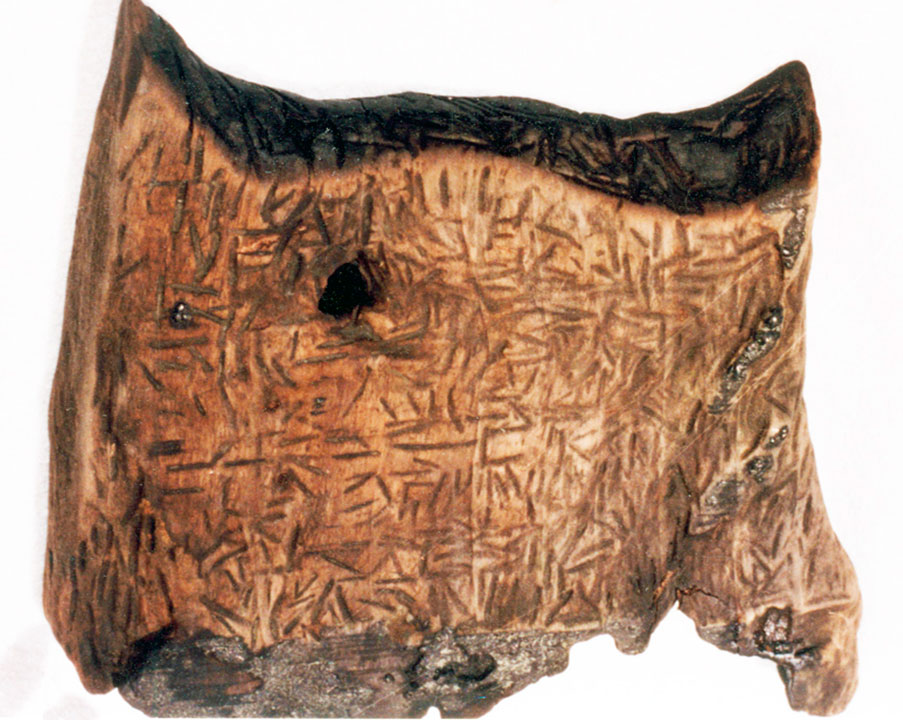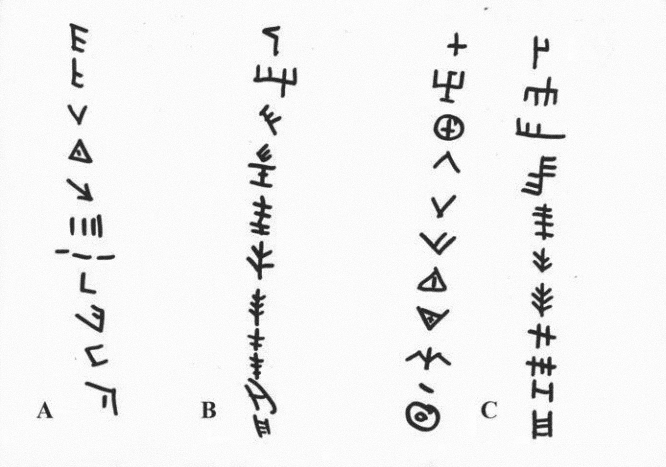The history of writing has been long and complicated. After the first concepts of ideograms emerged in different cultures, most scripts developed over time through gradual and natural processes. However, there are some exceptions. The Dispilio Tablet is one of them.

This mysterious artifact was discovered in a Neolithic lakeshore settlement that occupied an artificial island near the modern village of Dispilio on Lake Kastoria in the Kastoria Prefecture, Macedonia, by George Hourmouziadis, the Professor of Prehistoric Archaeology at the Aristotle University of Thessaloniki, and his team in 1993.
People living in the settlement 7,000 to 8,000 years ago used to inhabit the area, and the Dispilio Tablet was one of the many artifacts found there. The tablet is significant because it bears an ancient, cryptic inscription that dates back to before 5,000 BC.
The existence of the Dispilio Tablet (also known as the Dispilio Scripture) conflicts with conventional archaeology’s belief that writing was not developed until 3,000 to 4,000 BC in Sumeria.
The Carbon-14 (radiocarbon dating) method dated this wooden tablet to 5,260 BC, making it significantly older than the writing system used by the Sumerians. The text on the tablet includes a type of engraved writing that may consist of a pre-existed Linear B writing system used by the Mycenaean Greeks.

Professor Hourmouziadis has suggested that this kind of writing, which has not yet been decoded, may have been any kind of communication, including symbols representing the counting of possessions.
According to Professor Hourmouziadis, the markings suggested that the current theory proposing that the ancient Greeks received their alphabet from the ancient civilizations of the Middle East (Babylonians, Sumerians and Phoenicians etc) fails to close the historic gap of some 4,000 years.
This blind gap translates into the following facts: while ancient eastern civilizations would use ideograms to express themselves, the ancient Greeks were using syllables in a similar manner like we use today.
The currently accepted historic theory taught around the world suggests that the ancient Greeks learned to write around 800 BC from the Phoenicians. However, two intriguing questions emerge among scholars:
- How is it possible for the Greek language to have 800,000 word entries, ranking first among all known languages in the world, while the second next has only 250,000 word entries?
- How is it possible for the Homeric Poems to have been produced at about 800 BC, which is just when the ancient Greeks learned to write?
According to a US linguistic research, it would be impossible for the ancient Greeks to write these poetic works without having had a history of writing of at least 10,000 years back.
It’s amazing to think that the wooden tablet of Dispilio stayed at the bottom of the lake for 7,500 years. Unfortunately, the moment the tablet was removed out of its original environment after its discovery, contact with oxygen started the deterioration process. However, the ancient tablet is now under preservation.
Today, it is a near impossible task to decode the Dispilio Tablet unless a new Rosetta Stone is uncovered. This is a serious matter, as the tablet could rewrite the history of the world. If we can decode the tablet, it could reveal new information about the early days of human civilisation.
The Dispilio Tablet is a reminder of how much we still have to learn about our past. It is an important artifact, and it deserves to be studied by the best minds in the world. Hopefully, one day, we will be able to decode the tablet and learn its secrets.
To know more about the prehistoric settlement of Dispilio, read this interesting article.




